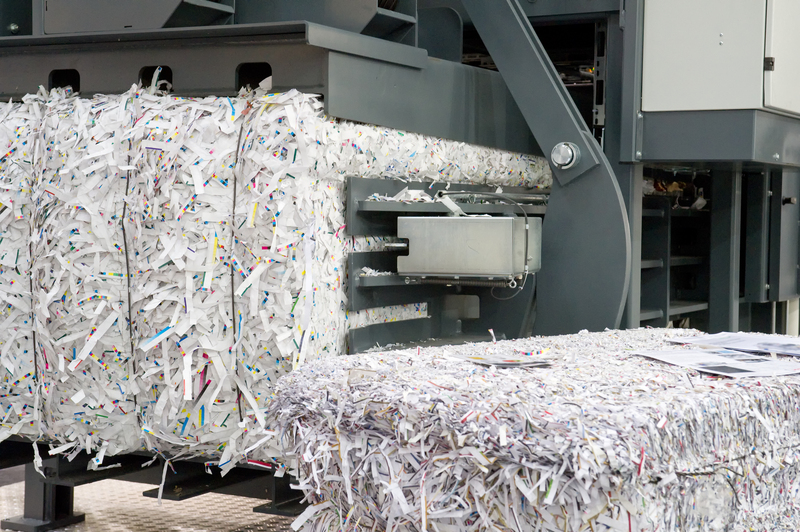Cut Down Expenses on Bulky Waste Items With These Methods
Bulky waste disposal can be both costly and inconvenient for households and businesses alike. Whether it's old furniture, appliances, or construction debris, the fees and logistics associated with getting rid of large items can quickly add up. In this detailed guide, you'll discover numerous methods, tips, and tactics designed to cut down expenses on bulky waste items, helping you save money and manage your waste more efficiently.
Understanding Bulky Waste and Its Challenges
Before diving into cost-cutting strategies, it's essential to understand what bulky waste is and why it poses unique challenges:
- Definition: Bulky waste refers to items too large for regular waste collection, such as mattresses, sofas, refrigerators, wardrobes, and garden debris.
- Common Challenges:
- High collection fees by waste management services.
- Limited municipal pickup schedules.
- Environmental considerations for proper disposal.
- Labor and transportation costs.
Mastering how to cut down expenses on bulky trash disposal will not only reduce financial stress but also promote a greener environment.

1. Assess Before You Dispose: Is It Truly Waste?
Reevaluate Items Before Disposal
One of the easiest ways to save on bulky waste removal is to scrutinize each item. Ask yourself:
- Can it be repaired or refurbished? - Sometimes minor repairs can give items years of extra life.
- Is it still usable? - Many items you consider waste could be treasures to others.
- Could it be upcycled? - Creative upcycling can turn old objects into functional or decorative pieces.
Reducing the actual volume of waste is the first step to minimizing costs. The less you have to haul away, the more you save!
2. Explore Donation and Giving Options
Donate to Local Charities and Nonprofits
Many organizations accept furniture, appliances, and other large items in good condition. Consider:
- Charity shops (e.g., Goodwill, Salvation Army, Habitat for Humanity ReStores)
- Homeless shelters and refuge centers
- Local churches, schools, or community organizations
- Online giving groups (such as Freecycle or Buy Nothing groups)
Donating keeps items out of landfills and may also offer tax deduction benefits, helping you reduce bulky waste disposal costs.
Give Away via Online Platforms
Use social media or dedicated platforms to give items away for free or at nominal costs:
- Craigslist "Free" section
- Facebook Marketplace
- Nextdoor
This method often results in the new owner handling transportation, further cutting your expenses.
3. Sell Bulky Items Online or at Local Markets
Tap Into the Second-Hand Economy
If your items are in good or fair condition, consider selling them:
- List items on eBay, OfferUp, or LetGo
- Participate in neighborhood garage sales or flea markets
- Specialized apps (such as Chairish for furniture)
This approach not only avoids disposal fees but could put some extra cash in your pocket. *Turning trash into treasure is a great way to offset bulky waste removal expenses!*
4. Leverage Municipal Bulky Waste Collection Services
Check Local Authority Provisions
Most towns and cities offer periodic bulky item pickups. To get the most value:
- Understand Schedule and Rules: Some municipalities provide free annual or semi-annual collections.
- Combine Loads: Coordinate with neighbors to maximize allowed volumes for each pickup.
- Early Signup Discounts: Some cities offer reduced fees for advance bookings.
Using municipal collection intuitively takes advantage of services you already fund through taxes, helping you slash bulky waste disposal costs.
5. DIY Disposal - Rent or Borrow a Truck
Save on Transportation Fees
If possible, handle disposal yourself by renting or borrowing a vehicle:
- Rent a pickup or van for a day from rental agencies or peer-to-peer car-sharing services.
- Ask friends or neighbors to share a ride to the recycling or landfill center.
- Check community tool and vehicle libraries.
Tip: Load up as many items as you can to spread costs over multiple bulky items in one trip.
6. Use Bulk Waste Drop-Off Points Efficiently
Community Drop-Off Facilities
Most regions have designated drop-off centers where bulky materials can be brought directly:
- Confirm accepted items (some sites only take certain sizes or types of waste).
- Sort and break down items to fit center requirements and avoid rejection.
- Timing your visit during community clean-up days may eliminate fees entirely.
Some centers also allow free collection of reusable items by interested parties, offering another path for unwanted goods to avoid disposal fees.
7. Pool Resources With Neighbors or Friends
Organize a Bulky Waste Collection Day
Share dumpsters or trailers to save:
- Split the cost of a commercial dumpster or skip hire in your community.
- Organize a "bulky item day" where everyone brings out items for one shared collection.
- Share costs and labor, making it cheaper and easier for everyone involved.
Pooling resources is a proven way to cut down expenses related to bulky waste items, especially during seasonal deep-cleaning or neighborhood renovation projects.
8. Consider Professional Junk Removal Companies
Get Quotes and Compare
If you must use a professional service, follow these tips for savings:
- Obtain several quotes for the best rate.
- Choose companies that offer volume-based as opposed to weight-based pricing to avoid overpaying.
- Negotiate rates if you have multiple large items.
- Ask about discounts for seniors, veterans, or first-time customers.
Some junk removal companies also offer lower prices if items are arranged curbside or are easily accessible, saving them time and reducing your bill.
9. Break Down Bulky Items Yourself
Reduce the Size, Reduce the Cost
Disassembling furniture, tearing down large appliances, and bagging parts separately can:
- Minimize the amount of space your items take in trucks or dumpsters.
- Allow regular garbage pickup of smaller pieces, bypassing special charges.
- Make items easier to transport, whether self-hauled or via a service.
Always take care if dismantling items with sharp or hazardous components. Check your local recycling rules for electronics or appliances with refrigerants.
10. Recycle or Repurpose Where Possible
Tap Into Specialized Recycling Streams
Many "bulky" items are recyclable at dedicated locations:
- Metal furniture, bed frames, and appliances at scrap metal yards
- Electronics through e-waste recycling programs
- Wood or clean timber may be accepted by some recycling centers
Recycling often costs less than landfill dumping and can sometimes even earn you small returns on scrap metal or reusable materials. Repurposing or distributing materials for DIY projects is another creative, low-cost solution!
11. Avoid Peak Season and Emergency Fees
Plan Ahead for Major Bulky Waste Events
Schedule your bulky waste disposal outside of peak periods--spring cleaning, moving season, and post-holidays are the busiest times for waste services, often accompanied by:
- Increased service rates
- Longer wait times
- Limited availability of collection slots
By scheduling in advance or aligning your disposal with routine community clean-ups, you can benefit from standard rates and more flexible service options.
12. Prevent Future Bulky Waste Expense by Making Smart Purchases
Invest in Durability and Modular Designs
The last tip in your journey to cut down expenses on bulky waste items is prevention:
- Choose high-quality, durable furnishings that last for years.
- Opt for modular furniture that can be more easily repaired or adapted.
- Avoid unnecessary purchases that have short usable lives or low resale value.
- Consider rentals or second-hand purchases to reduce the future waste stream.
This mindset keeps both disposal frequency and costs to a minimum.

Summary Table: Smart Ways to Reduce Bulky Waste Disposal Expenses
| Method | Main Benefit |
|---|---|
| Repair, Upcycle, or Reuse | Eliminates waste, saves disposal fees |
| Donation & Selling | Removes items at no cost or earns money |
| Municipal Pickup | Utilizes tax-funded service, no extra fee |
| DIY Hauling | Eliminates third-party costs |
| Drop-off Facilities | Lower (sometimes free) disposal costs |
| Pooling with Neighbors | Reduced shared expenses |
| Compare Junk Removal Services | Find the best value for your needs |
| Breakdown Items | Fits more items, reduces haul costs |
| Recycle | Eco-friendly, often cheaper than landfill |
Final Thoughts: Reduce Costs and Waste Smarter
Cutting down expenses on bulky waste items is not just about saving money--it's about being resourceful, environmentally conscious, and community-minded. By using these methods, you can transform what seems like a costly headache into an opportunity to support local organizations, make extra income, or simply enjoy a decluttered and sustainable living space.
Next time you face the challenge of unwanted large items, refer back to this guide for practical, actionable strategies to minimize both environmental impact and your out-of-pocket expenses!
Want more tips on saving money and sustainable living? Subscribe to our newsletter for regular updates!